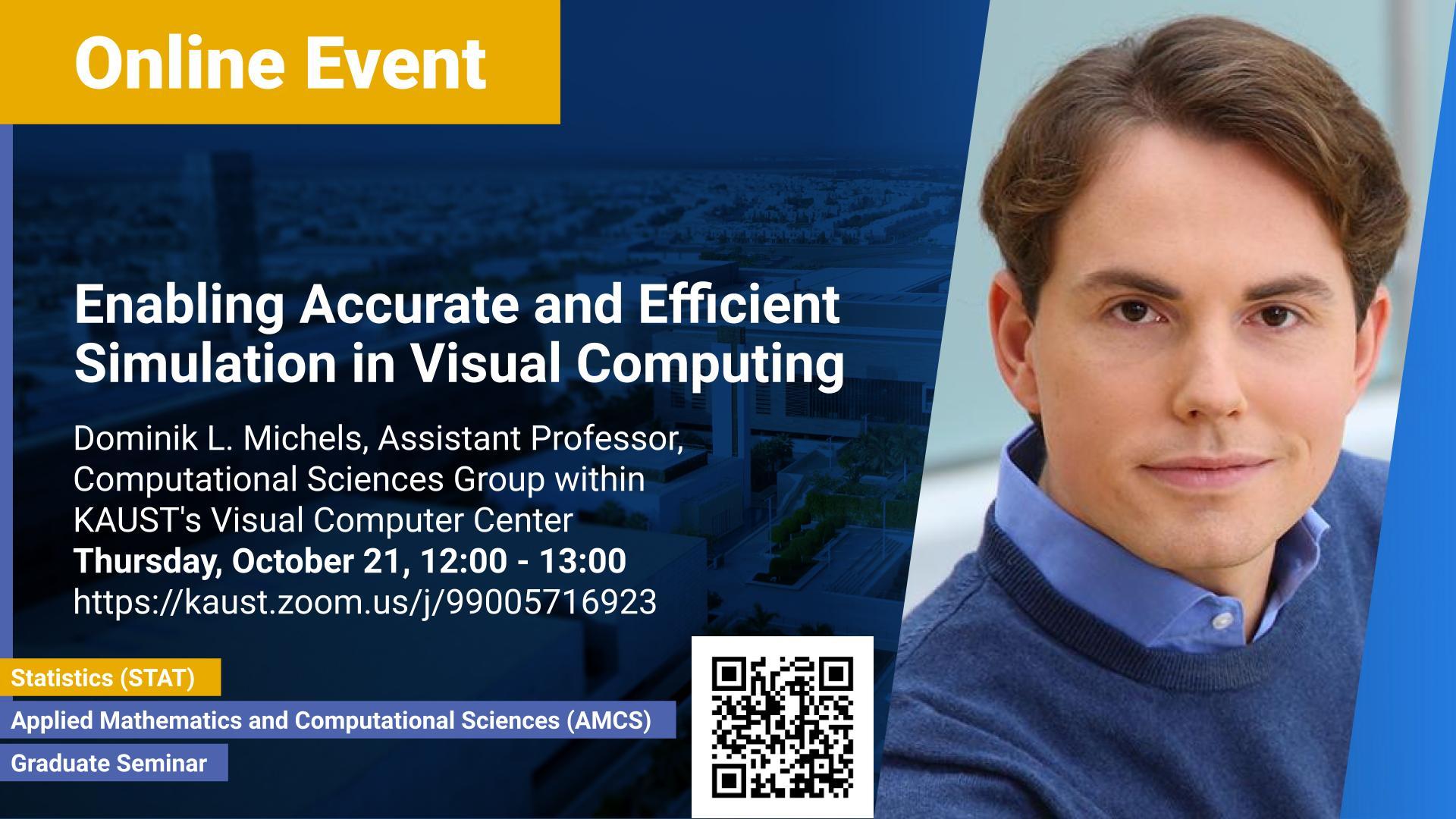Abstract
The overarching goal of Prof. Michels' Computational Sciences Group within KAUST's Visual Computing Center is enabling accurate and efficient simulations for applications in Scientific and Visual Computing. Towards this goal, the group develops new principled computational methods based on solid theoretical foundations. This talk covers a selection of previous and current work presenting a broad spectrum of research highlights ranging from simulating stiff phenomena such as the dynamics of fibers and textiles, over liquids containing magnetic particles, to the development of complex ecosystems and weather
phenomena. Moreover, connection points to the growing field of machine learning are addressed and an outlook is provided with respect to selected technology transfer activities.
Brief Biography
Since summer 2016, Prof. Michels is heading the Computational Sciences Group within KAUST's Visual Computer Center.
Previously, he joined Stanford University in fall 2014 heading the High Fidelity Algorithmics Group within the Max Planck Center for Visual Computing and Communication. Prior to this, he did postdoctoral studies in Computing and Mathematical Sciences at Caltech in spring and summer 2014. He studied Computer Science and Physics at the University of Bonn from where he received a B.Sc. in Computer Science and Physics in 2011, a M.Sc. in Computer Science in 2013, and a Ph.D. from the Faculty of Mathematics and Natural Sciences (Dr.rer.nat.) in early 2014.

